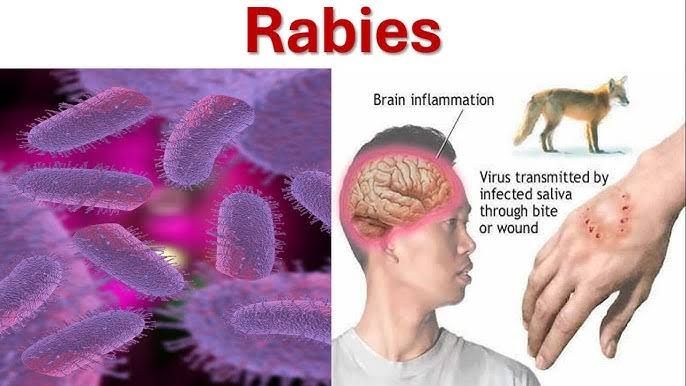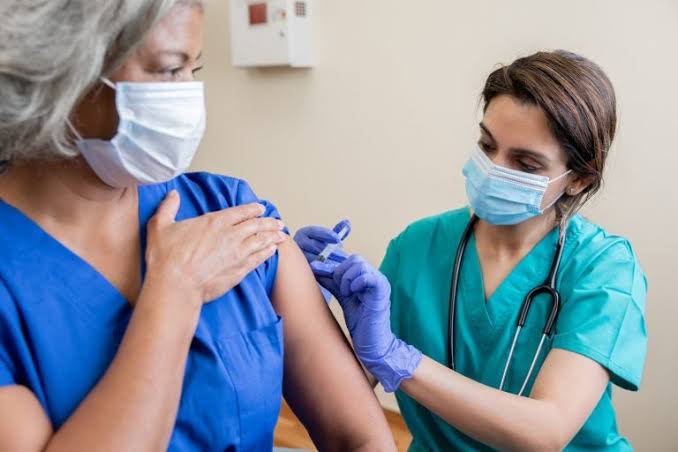
Rabies, a zoonotic viral disease, remains a significant public health concern globally despite being entirely preventable. Affecting the central nervous system of mammals, it leads to progressive, fatal encephalitis if post-exposure prophylaxis (PEP) is not administered promptly. Understanding the epidemiology of rabies – the study of its distribution and determinants in populations, and the application of this study to control health problems – is fundamental to effective prevention and control strategies.
1. The Epidemiological Triad: Agent, Host, and Environment
The occurrence and spread of any disease are intricately linked to the interplay between the infectious agent, the susceptible host, and the surrounding environment. In the context of rabies, this triad provides a robust framework for epidemiological analysis.
1.1. The Agent: Rabies Virus (RabV)
The causative agent of rabies is the rabies virus (RabV), a member of the Lyssavirus genus within the Rhabdoviridae family.
- Classification and Structure: RabV is a neurotropic, single-stranded RNA virus, characterized by its distinctive bullet shape. Its genome encodes five proteins, crucial for its replication and pathogenicity.
- Pathogenesis: Following inoculation, typically through a bite, the virus replicates in the muscle cells near the site of exposure. It then enters the peripheral nervous system and travels retrograde along the nerve fibers to the central nervous system (CNS). Once in the brain, it replicates extensively, causing the characteristic neurological signs and pathology. Subsequently, the virus spreads centrifugally to various organs, including salivary glands, making saliva infectious.
- Survival Outside Host: The rabies virus is remarkably fragile outside a living host. It is highly susceptible to desiccation, ultraviolet light, heat, and common disinfectants like soap and water, ethanol, and iodine. This fragility underscores why transmission is almost exclusively through direct contact with infected saliva, primarily via bites.
1.2. Host Factors
Hosts play a dual role in rabies epidemiology: reservoir hosts maintain the virus within a population, while susceptible hosts can contract the disease.
- Reservoir Hosts:
- Canine Rabies (Urban Cycle): Domestic dogs are the primary reservoir and transmitter of rabies to humans worldwide, especially in Asia and Africa. Unvaccinated stray and free-roaming dogs perpetuate this cycle.
- Wildlife Rabies (Sylvatic Cycle): In many developed countries, wildlife represents the primary reservoir. Key wildlife reservoirs vary geographically:
- North America: Raccoons, skunks, foxes, and bats.
- Europe: Red foxes (historically, largely controlled by oral vaccination), bats.
- Africa: Jackals, mongooses, African wild dogs.
- Asia: Foxes, wolves, bats.
- Latin America: Vampire bats (a significant reservoir for livestock and human transmission).
- Bats: Unique among reservoirs, bats can asymptomatically carry and shed the rabies virus for extended periods, making them a challenging reservoir to manage. Bat-associated rabies is a growing concern in some regions.
- Susceptible Hosts: All mammals are susceptible to rabies infection, though susceptibility varies. Humans are accidental or ‘dead-end’ hosts, meaning human-to-human transmission is extremely rare and epidemiologically insignificant. Livestock (cattle, horses) can also be infected, often serving as a source of exposure for farmers and veterinarians.
- Clinical Manifestations in Hosts: The incubation period in animals can range from a few days to several months, influenced by the viral load, bite location (proximity to CNS), and host species. Clinical signs often present as ‘furious’ rabies (aggressiveness, biting, salivation) or ‘dumb’ (paralytic) rabies (depression, paralysis, lack of coordination). Both forms are invariably fatal once clinical signs appear.
1.3. Environmental Factors
Environmental factors influence the distribution, prevalence, and transmission dynamics of rabies by affecting host populations and their interactions.
- Geographical Distribution: Rabies is endemic on every continent except Antarctica. Over 95% of human deaths occur in Asia and Africa, largely due to dog-mediated transmission. Regions with robust animal vaccination programs and wildlife management efforts have significantly reduced or eliminated indigenous canine rabies.
- Ecological Factors:
- Urbanization and Encroachment: Expanding human populations into wildlife habitats can increase contact between domestic animals, humans, and wild rabid animals, facilitating spillover events.
- Habitat Fragmentation: Can disrupt wildlife populations, potentially leading to increased stress and altered behavior that may influence disease transmission.
- Climate: While not a direct determinant, climate can indirectly affect host behaviour, population dynamics, and disease distribution (e.g., impact on bat migration or feeding patterns).
- Socio-Economic Factors:
- Poverty: Limits access to quality healthcare, including post-exposure prophylaxis, in low-income settings.
- Lack of Awareness: Insufficient public knowledge about rabies prevention and first aid post-exposure.
- Cultural Practices: Some cultural beliefs or practices concerning animals can impact vaccination efforts or stray animal management.
- Animal Control Infrastructure: The presence or absence of effective animal control programs (e.g., stray dog management, vaccination campaigns) significantly influences the urban rabies cycle.
2. Modes of Transmission
Understanding how rabies is transmitted is crucial for targeted prevention.
- 1. Bite of a Rabid Animal (Primary Mode): The most common and epidemiologically significant mode of transmission is through a bite from an infected animal, where the virus-laden saliva is inoculated into breaks in the skin. The deeper and more severe the bite, and the closer it is to the brain, the shorter the incubation period and higher the risk of infection.
- 2. Contamination of Mucous Membranes or Broken Skin: Transmission can rarely occur if infected saliva directly contacts mucous membranes (e.g., eyes, nose, mouth) or fresh, open wounds without a definitive bite.
- 3. Scratch: A scratch from a rabid animal can transmit the virus if the animal’s claws are contaminated with infected saliva.
- 4. Aerosol Transmission (Rare): Extremely rare, but documented in laboratory settings and specific bat caves where high concentrations of airborne virus particles are present. This mode is not considered a significant public health risk outside these unique environments.
- 5. Organ Transplantation (Extremely Rare): A few documented cases exist where rabies has been transmitted through transplanted organs (e.g., kidney, cornea) from an infected donor. This highlights the importance of thorough donor screening.
- 6. Human-to-Human Transmission: Direct human-to-human transmission of rabies is extremely rare and has only been documented theoretically or in highly unusual circumstances (e.g., through contaminated instruments in healthcare settings, though this is not typical) and is not a public health concern.
3. Prevention and Control Measures
The overarching goal of rabies prevention and control is to eliminate human deaths from the disease and manage animal rabies populations effectively. This requires a multi-sectoral ‘One Health’ approach, integrating human, animal, and environmental health efforts.
Step 1: Mass Dog Vaccination Campaigns
- Target: Domestic dogs, as they are the source of over 95% of human rabies deaths.
- Strategy: Implement large-scale, sustained canine vaccination programs, aiming for at least 70% vaccination coverage of the dog population in at-risk areas. This level of herd immunity effectively breaks the chain of transmission from dogs to humans and other animals.
- Implementation: Conduct door-to-door vaccination, community vaccination points, and compulsory vaccination policies, alongside responsible pet ownership promotion. Annual booster vaccinations are vital.
Step 2: Wildlife Rabies Management
- Target: Wild carnivore populations identified as key reservoirs.
- Strategy: Oral Rabies Vaccination (ORV) programs, where vaccine baits are distributed in affected wildlife habitats. This has been highly successful in controlling fox rabies in parts of Europe and raccoon rabies in North America.
- Surveillance: Continuous monitoring of wildlife populations for rabies cases to identify emerging threats and assess ORV effectiveness.
- Lethal Control (Limited Role): Culling of wildlife is generally ineffective for long-term control and is often controversial. It is not recommended as a primary control measure for wildlife rabies.
Step 3: Post-Exposure Prophylaxis (PEP) for Humans
- Target: Individuals exposed to a potentially rabid animal. This is a life-saving intervention.
- Immediate Wound Management: Thorough washing and flushing of the wound with soap and water for at least 15 minutes immediately after exposure. This physically removes virus particles and significantly reduces the risk of infection.
- Rabies Immunoglobulin (RIG): Infiltration of RIG (human or equine) around and into the wound, if available and indicated, to provide immediate passive immunity.
- Rabies Vaccine Series: Administration of a series of rabies vaccine doses (intramuscular or intradermal) to stimulate active immunity. The specific schedule depends on the type of exposure and vaccine availability (e.g., 4-dose or 5-dose regimens).
- Risk Assessment: Prompt medical evaluation to assess the risk of exposure based on animal species, behavior, and type of contact, guiding PEP decisions.
Step 4: Pre-Exposure Prophylaxis (PrEP) for Humans
- Target: High-risk individuals.
- Strategy: Vaccination before potential exposure. Recommended for veterinarians, animal handlers, laboratory workers dealing with rabies virus, and travelers spending extended periods in highly endemic areas with limited access to prompt PEP.
- Schedule: Typically involves a series of 2 or 3 vaccine doses, providing foundational immunity. Booster doses may be required for continued protection depending on ongoing risk.
Step 5: Surveillance and Laboratory Diagnosis
- Target: Monitoring rabies presence in animal and human populations.
- Active and Passive Surveillance: Establishing systems for reporting suspected animal and human rabies cases. Enhanced surveillance in high-risk areas.
- Laboratory Confirmation: Rapid and accurate laboratory diagnosis of rabies in animal brains (e.g., Direct Fluorescent Antibody Test – dFAT) to confirm cases and guide public health action. Molecular methods (e.g., PCR) are also used.
- Data Collection and Reporting: Systematic collection and analysis of epidemiological data to understand trends, identify hotspots, and evaluate control program effectiveness.
Step 6: Public Education and Awareness
- Target: The general public, especially those in high-risk communities.
- Key Messages:
- Responsible pet ownership, including annual vaccination of dogs.
- Avoiding contact with stray or wild animals.
- What to do in case of an animal bite (immediate wound washing, seek medical attention).
- The importance of not allowing children to play unsupervised with unknown animals.
- Methods: Community campaigns, school education programs, media outreach, and use of local community leaders.
Step 7: Policy and Legislation
- Target: Establishing a supportive legal and regulatory framework.
- Mandatory Vaccination/Registration: Legislation enforcing mandatory dog registration and vaccination.
- Animal Control Laws: Regulations for stray animal management, including responsible rehoming or humane euthanasia.
- International Collaboration: Partnerships with international organizations (e.g., WHO, OIE, FAO) and neighboring countries for cross-border disease control and sharing best practices.
Step 8: Research and Development
- Target: Advancing tools and strategies.
- Improved Vaccines and Diagnostics: Continued research into more affordable, heat-stable, and effective human and animal vaccines, as well as faster and simpler diagnostic tests.
- Operational Research: Studies to optimize vaccine delivery methods, improve surveillance systems, and enhance community engagement.
Conclusion
Rabies, though a terrifying disease, is entirely preventable. Its epidemiology highlights the complex interplay between the virus, its diverse mammalian hosts, and the surrounding environment. Effective control hinges on a sustained, multi-faceted, and collaborative ‘One Health’ approach that prioritizes mass dog vaccination, prompt post-exposure prophylaxis for humans, robust surveillance, and widespread public education. By consistently implementing these proven strategies, the global community can continue its progress towards eliminating human deaths from rabies and reducing the burden of this ancient, yet conquerable, disease.







